
Recent reports from McKinsey and Flexera highlight just how rapidly the world is shifting toward a cloud-first future, and the implications for industrial automation are profound.
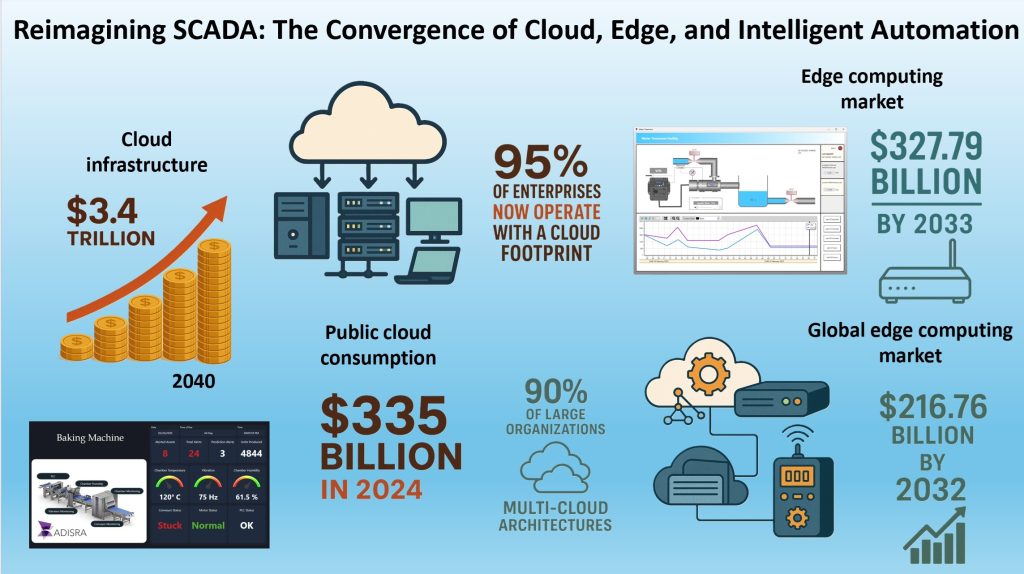
According to McKinsey’s “Riding the Hyperscaler Wave: The Investment Opportunity in Cloud Ecosystems,” the market for cloud infrastructure could reach $3.4 trillion by 2040, with public cloud consumption alone rising from $90 billion in 2019 to $335 billion in 2024. Hyperscaler clouds, offered by providers like Amazon Web Services (AWS), Microsoft Azure, and Google Cloud Platform (GCP), now serve as the backbone of digital transformation, delivering scalable infrastructure (IaaS), platforms (PaaS), and software (SaaS) that power the global economy.
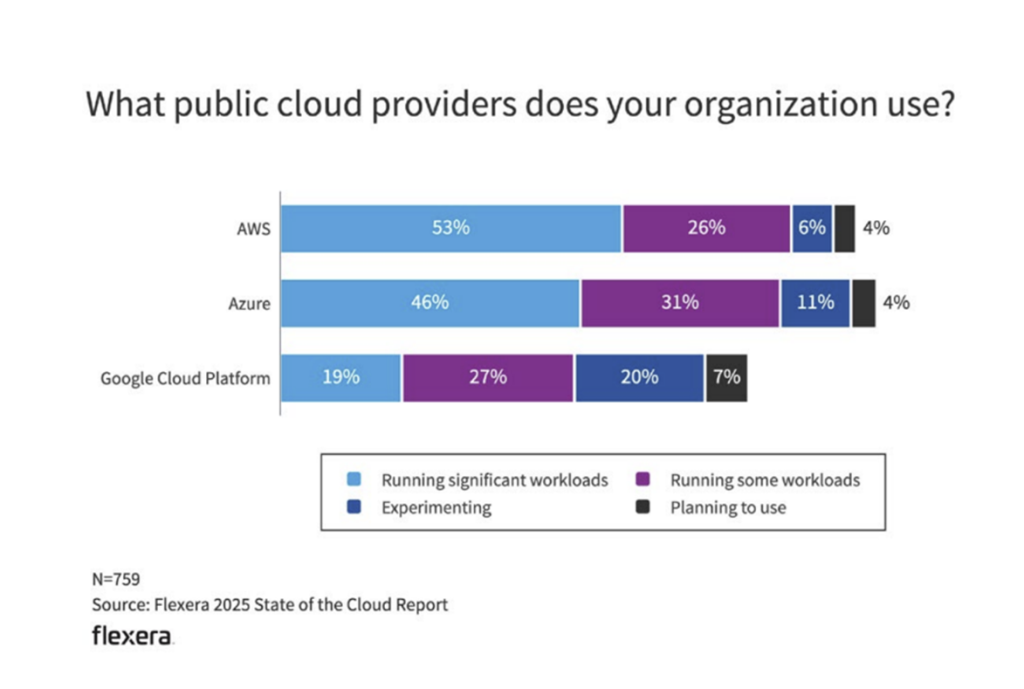
Flexera’s “State of the Cloud Report” reinforces this trajectory: more than 95% of enterprises now operate with a cloud footprint, and by 2025, over half of all enterprise workloads will run in public clouds. AWS and Azure continue to compete closely among large enterprises, while AWS maintains a lead with SMBs. Google Cloud also continues to grow, with nearly half of organizations running at least some workloads on its platform.
Beyond the cloud, edge computing is emerging as a powerful complement by processing data closer to its source, enabling real-time decisions in industrial and IoT environments. With the expansion of 5G networks and the rapid proliferation of IoT devices, this convergence of cloud and edge is redefining how data is collected, analyzed, and acted upon in sectors like manufacturing, energy, and smart cities. Grand View Research projects the edge computing market will reach $327.79 billion by 2033 at a CAGR of 33%, fueled by demand for low-latency and high-reliability systems.
Simultaneously, industry-specific (vertical) clouds are gaining traction. Designed for sectors such as healthcare, finance, and manufacturing, these platforms deliver prebuilt compliance, domain-specific analytics, and tailored tools that accelerate innovation and deployment.
However, as cloud adoption accelerates, cost optimization and data management have become top priorities. Rising cloud costs are pushing organizations to embrace multi-cloud and hybrid strategies, deploying workloads across multiple providers to balance cost, performance, and compliance. Research shows that around 90% of large organizations already use multi-cloud architectures, distributing data across various providers. This trend is expected to continue well beyond 2024, offering greater flexibility and risk mitigation while ensuring each service runs in its most efficient environment.

A recent Multi-Cloud Maturity Report found that 95% of organizations view multi-cloud strategies as critical for business success, and 52% believe companies that fail to adopt them risk falling behind. Multi-cloud approaches also help organizations protect customer privacy and maintain compliance with data sovereignty laws.

AI-generated
The Evolution of Cloud-Based SCADA
Modern Cloud-Based Supervisory Control and Data Acquisition (SCADA) systems began to take shape in the early 2010s, when industrial operators started using the cloud as a centralized hub for operational data. This evolution unlocked capabilities like remote access, scalable data storage, and advanced analytics, forming the foundation of the Industrial Internet of Things (IIoT).
Today, the combination of hyperscale infrastructure, intelligent edge devices, and secure connectivity is accelerating this transformation, pushing SCADA into a new era of data-driven, connected operations that span both cloud and edge environments.
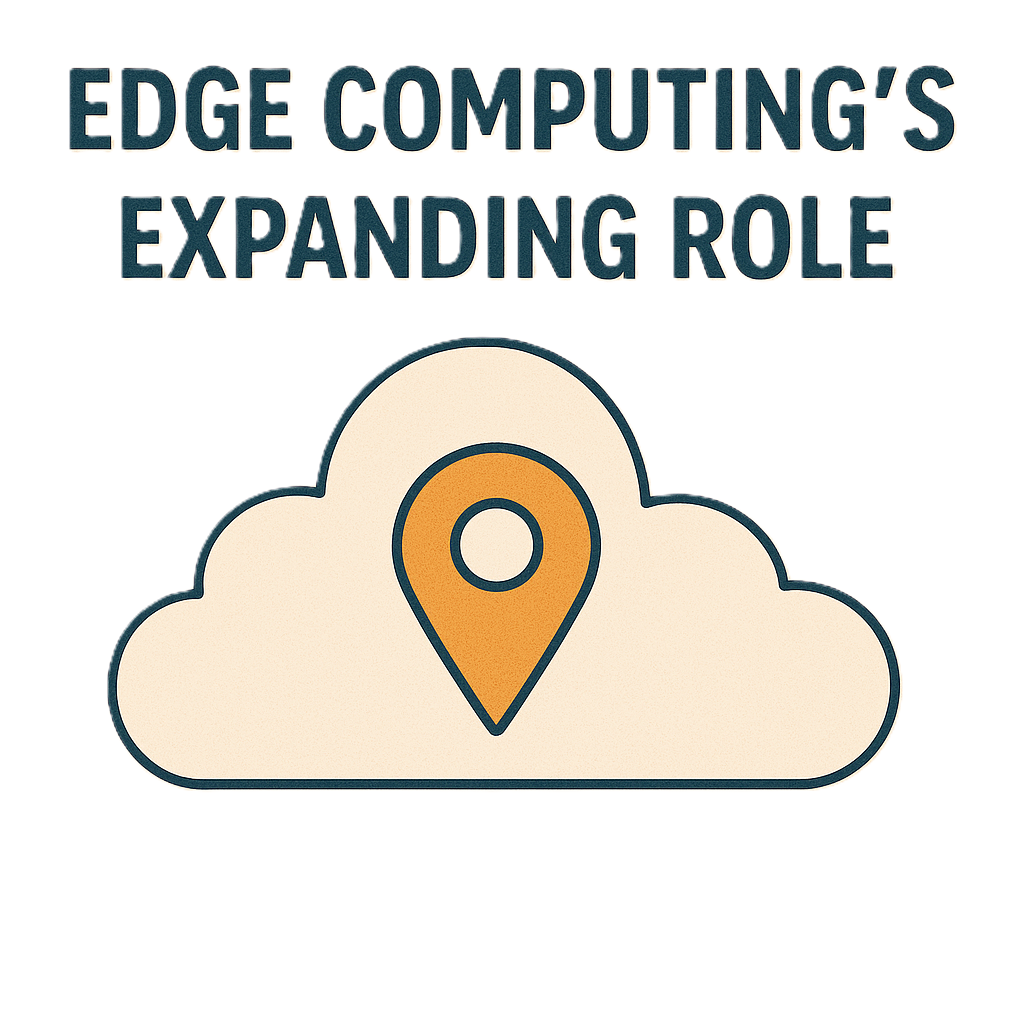
AI Generated
Edge Computing’s Expanding Role
According to Fortune Business Insights, the global edge computing market is expected to grow from $21.14 billion in 2024 to $216.76 billion by 2032, at a CAGR of 33.6%. This rapid expansion presents major opportunities for cloud infrastructure providers as enterprises seek a decentralized architecture that brings computational power closer to data sources. A Strategies for Success at the Edge survey found that 30% of enterprises plan to allocate portions of their IT budgets to edge computing initiatives.
By leveraging locally generated data, edge computing supports real-time responsiveness, enhances user experiences, reduces transmission costs, and improves data security, all while complementing cloud capabilities.
In manufacturing, for example, edge systems can analyze sensor data from machines in real time to enable predictive maintenance, reduce downtime, and enhance efficiency. Meanwhile, cloud platforms can store and process large volumes of historical data to uncover long-term performance insights and optimize operations across multiple sites.
From Traditional to Cloud-Based SCADA
As the name suggests, SCADA (Supervisory Control and Data Acquisition) has two fundamental components: control and data acquisition.
In traditional, on-premise SCADA systems, these functions are typically hosted on local servers and presented to operators through a graphical user interface (HMI), for example, on a panel PC on the shop floor or a workstation in a control room. All data processing, storage, and visualization occur within the plant’s local network infrastructure.
In contrast, Cloud-Based SCADA leverages modern IoT ecosystems to extend this architecture beyond the facility. Through edge devices, a secure secondary communication channel is established to transmit selected process data to the cloud. Once the data resides in the cloud, it can be accessed via web-based applications on any device with an internet connection, whether a desktop, tablet, or smartphone.
Communication between field devices, edge nodes, and cloud platforms is often enabled through open and secure protocols such as HTTP, OPC UA, and MQTT. This architecture enables remote visibility, scalability, and real-time analytics, transforming how manufacturers monitor and manage their operations.
In simple terms, Cloud-Based SCADA allows organizations to operate their traditional SCADA systems within a cloud environment, unlocking greater connectivity, flexibility, and scalability compared to purely on-premise deployments.
Key Differences Between On-Premise and Cloud-Based SCADA
– Accessibility – Cloud-based SCADA can be accessed securely from anywhere with an internet connection, while on-premise systems are typically restricted to the facility’s local network.
– Scalability – Cloud-based systems can easily scale up or down to meet changing data volumes or user demands. In contrast, on-premise systems often require additional hardware investments to expand capacity.
– Maintenance – Cloud-based SCADA is generally maintained and updated by a third-party cloud provider, whereas on-premises systems require in-house IT and engineering resources for maintenance and upgrades.
– Cost Structure – Cloud-based SCADA typically offers lower upfront costs but recurring subscription or service fees. On-premise systems, conversely, involve higher initial hardware and software costs but lower ongoing expenses once deployed.
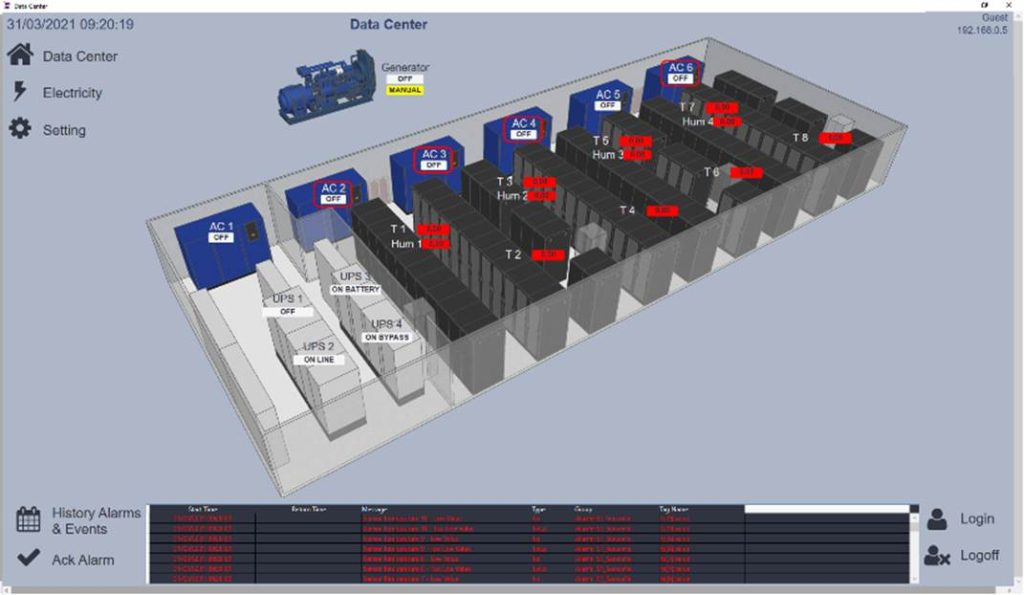
ADISRA SmartView: Flexible Deployment for Every Need
ADISRA SmartView offers the best of both worlds. It can be deployed on-premise, on a headless edge or IIoT device, an HMI panel, a mobile device, a local server within the plant, or in the cloud, depending on your operational requirements. This flexibility allows organizations to choose the deployment model that best fits their security, performance, and scalability needs.

Edge Computing and Cloud SCADA: Powering Smarter Industrial Operations
In ADISRA SmartView, edge computing plays a critical role in enabling real-time data collection from sensors and devices, local data processing, and faster decision-making. This capability ensures that industrial operations remain efficient, reliable, and responsive, especially in environments where every millisecond matters.
Key Benefits of Edge Computing
– Reduced Latency: Processing data locally minimizes response time, which is crucial for applications such as industrial automation, autonomous systems, and predictive maintenance.
– Improved Bandwidth Efficiency: By handling data at the edge, less information needs to be transmitted to the cloud, reducing bandwidth consumption and network congestion.
– Enhanced Security: Sensitive data can be analyzed, filtered, and anonymized at the edge before transmission, reducing cybersecurity risks associated with centralized systems.
– Offline Functionality: Edge systems enable continuous operation and decision-making even in locations with limited or intermittent internet connectivity.
– Analytics on the Edge: Real-time insights are generated where data originates, allowing instant responses to critical events and improving overall system reliability.

Intelligence at the Edge: The Rule-Based Expert System
ADISRA SmartView, with its integrated rule-based expert system, takes edge computing even further by embedding intelligence directly into operational workflows. Using predefined rules based on industry best practices and domain expertise, ADISRA SmartView enables autonomous decision-making in real time. This includes:
– Automatically triggering alarms in response to critical thresholds or abnormal events.
– Initiating corrective actions to prevent failures and maintain optimal performance.
– Predicting potential equipment issues before they occur, reducing downtime and maintenance costs.
By combining HMI/SCADA functionality with edge intelligence, ADISRA SmartView empowers operators to collect, visualize, and analyze data closer to the source, leading to faster, smarter, and more efficient decision-making.
Advantages of Cloud-Based SCADA
When deployed in the cloud, ADISRA SmartView expands these capabilities across sites, plants, and regions. Cloud-based SCADA provides significant benefits such as:
– Reduced IT Costs: No need for large upfront hardware or server investments; maintenance and upgrades are managed by the cloud provider.
– Scalability and Flexibility: Easily add new devices, plants, or users, and scale computing resources as operational needs grow.
– Enhanced Data Accessibility: Access real-time and historical data securely from anywhere, on any device.
– Improved Data Correlation: Aggregate and analyze information from multiple IIoT devices and remote facilities to gain deeper insights across operations.
One of the most powerful advantages of Cloud SCADA is the ability to connect with remote IIoT assets. Using lightweight, secure communication protocols like MQTT, geographically dispersed devices can seamlessly transmit real-time data to the cloud, making it possible to monitor and manage assets that were once difficult or expensive to connect.
Expanding Possibilities: From Predictive Maintenance to Sustainability
Cloud-based SCADA unlocks a wide range of data-driven applications that go far beyond traditional monitoring:
– Predictive Maintenance: Analyze trends and performance data to anticipate failures and schedule maintenance proactively.
– Energy Management: Track and optimize energy consumption across multiple facilities for cost reduction and sustainability.
– Supply Chain Optimization: Integrate SCADA insights with enterprise systems to improve production planning and material flow.
– Environmental Monitoring: Collect data from remote sensors to ensure compliance and measure environmental impact.
Conclusion: The Future of Industrial Intelligence
By integrating edge computing, rule-based intelligence, and cloud scalability, ADISRA SmartView bridges the gap between local control and global visibility. This unified approach empowers manufacturers to respond instantly at the edge while leveraging the cloud’s power for analytics, optimization, and collaboration.
Whether your goal is real-time performance monitoring, predictive analytics, or enterprise-wide connectivity, ADISRA SmartView provides the tools to help you transform your operations into a smarter, more resilient system.
For more information or assistance, our ADISRA Support Team is here to help. Email us at support@adisra.com, chat with us at adisra.com, or call 512-993-2949.
If you would like to see ADISRA SmartView in action, schedule a private demo here, or download your trial version to explore its capabilities firsthand.
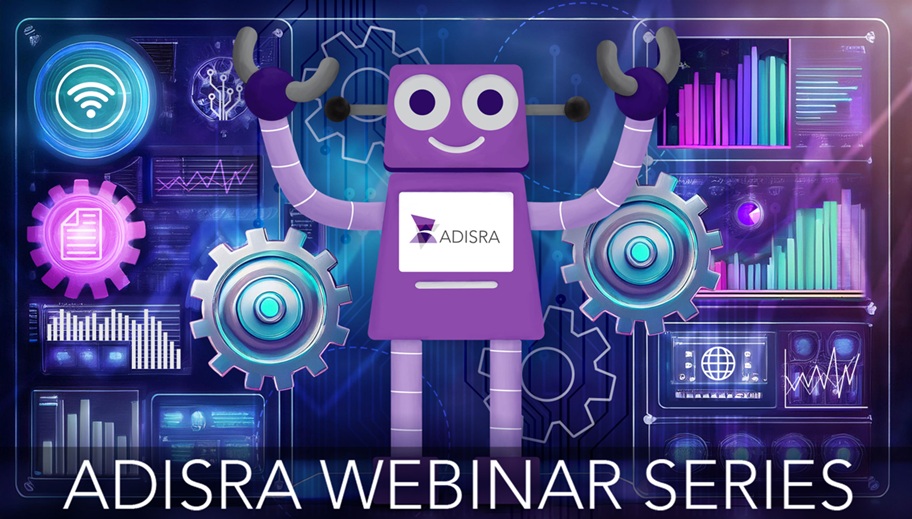
Upcoming Webinar: Tips, Tricks, and Hidden Treasures in ADISRA SmartView
October 30th, 2025 — 9:30 AM CDT / 9:30 AM COT / 2:30 PM GMT / 9:30 PM WIB
Discover the hidden features in ADISRA SmartView that can save time, simplify your workflow, and make application development easier than ever. Learn shortcuts, lesser-known tools, and best practices that can boost productivity and streamline your projects—whether you’re a new or experienced developer.
Secure your spot today: Register Here
ADISRA®, ADISRA’S logo, InsightView®, and KnowledgeView® are registered trademarks of ADISRA, LLC.
© 2025 ADISRA, LLC. All Rights Reserved.
